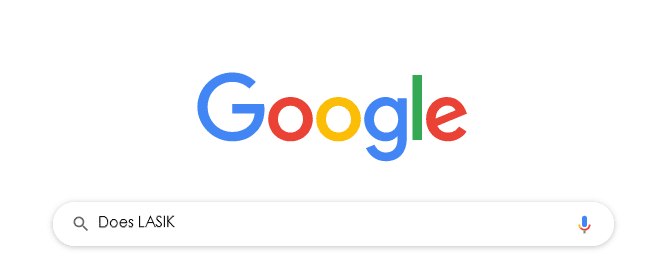More LASIK FAQs? Let’s Ask a LASIK Eye Surgeon

In our latest edition of Ask a LASIK Eye Surgeon, we spoke with RSC editorial advisor Blake Williamson, M.D. of Williamson Eye in Baton Rouge, LA to answer some of the LASIK FAQs asked of the internet. The latest series of questions tackles some of the myths associated with the popular laser vision correction procedures including Does LASIK hurt? Does LASIK last forever? Does LASIK fix lazy eye? Does LASIK change eye color?

Does LASIK hurt?
The procedure itself is mostly painless for most of my patients. When we make the flap there is a suction cup on the eye, which puts a bit of pressure on the eye. It only lasts about 30-seconds, and most patients don’t find it too uncomfortable. We are also frequently putting drops in the eye, to keep the surface numb and hydrated, so patients feel cold liquid in and around the eye. Some patients have some discomfort during those first few hours after the procedure after the anesthesia wears off. This is usually described as a stinging, irritated sensation. We strongly recommend patients keep their eyes closed and take a nap through this brief period. By the end of the day, patients feel – and see – much better and certainly, by the next day, there’s no pain at all.
Does LASIK last forever?
Let’s be very clear: LASIK doesn’t wear off. That’s a myth. LASIK is an extremely precise procedure that takes place on only 1 percent of the eye – the surface layers of the cornea. What happens there is a permanent change in that tissue. However, the other 99 percent of the eye isn’t impacted by the surgery. That 99 percent is going to age and change right along with the rest of your body. Your vision will change and typically in your late 40s, early 50s you will need glasses for seeing up close. But the changes that were made to improve your vision distance at the time of your procedure are maintained. For those patients who do need reading glasses, the good news is there are other vision correction procedures that can help with that.
Does LASIK fix lazy eye?
Amblyopia or strabismus are commonly called “lazy eye” and they are both muscular issues. The eyeball physically turns outward or inward and patients aren’t able to control it. LASIK doesn’t correct the muscular structure of the eye. However, some people with amblyopia or strabismus have vision correction needs and wear glasses or contacts to address them. For these patients, LASIK may be appropriate. It isn’t going to change the position of the eye, just its ability to focus. LASIK can achieve the same vision correction as glasses or contacts for those patients with amblyopia or strabismus.
Does LASIK change eye color?
In a word: No. In fact, there is no procedure to permanently change the color of the eye available here in the U.S. The only recommended approach to changing eye color is with colored contact lenses – and then only under the supervision of an eye care professional.
Have more LASIK FAQs?
Not surprisingly, most questions about LASIK on Google have to do with the cost of the procedure. To help, we put together this LASIK Cost: A Complete Guide. For those interested in the latest research into the safety and efficacy of laser vision correction, we recommend visiting our In the Journals section.
While the internet is a powerhouse of information, getting answers to the questions that matter most to you about your eye and vision health is best done with an ophthalmologist. Don’t have one? Check out our Find an Eye Doctor feature to find a qualified LASIK eye surgeon in your area.




